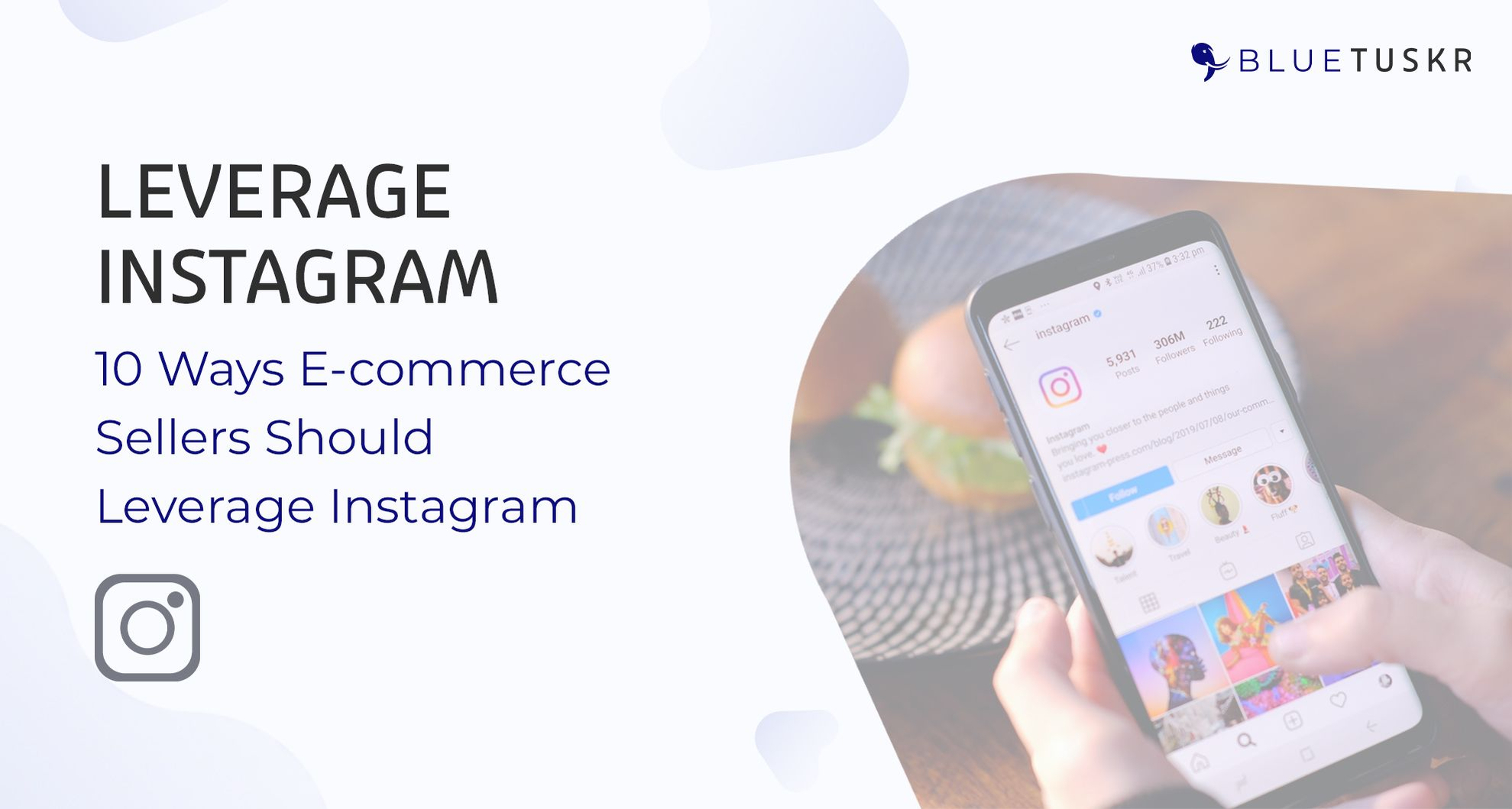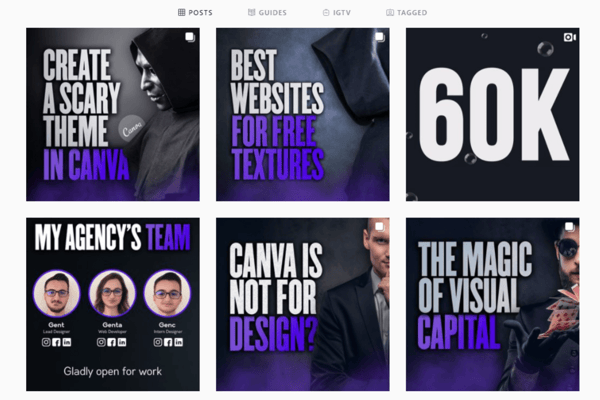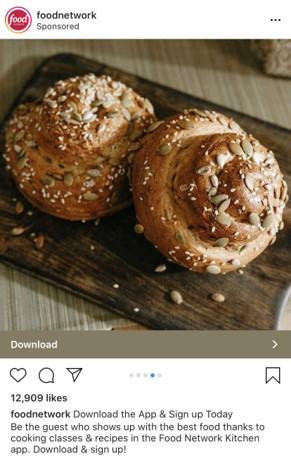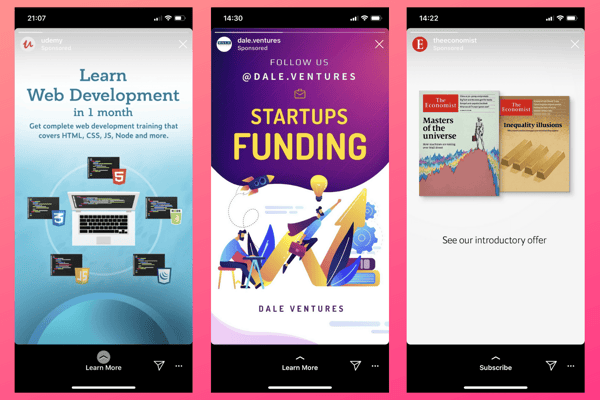
10 Ways E-commerce Sellers Should Leverage Instagram - Updated 2023
The average consumer spends over two hours on social networks every day. The ability to market and promote a company through these pre-existing high traffic platforms can allow any business to become successful.
By developing well-designed content, businesses can conquer "ecommerce Instagram." A dynamic Instagram presence can be used to increase brand awareness and boost sales.
Keep reading for your go-to guide for how to use Instagram for ecommerce.
What Is Ecommerce?
Ecommerce is defined as the buying and selling of products or services via the internet. Online selling can either be a substitute for brick and mortar stores or complementary to an in-person storefront.
In recent years Instagram has become a new source of revenue for ecommerce. This has been done through product tagging and the creation of shoppable reels, posts, and stories.
Tips for Ecommerce Instagram Accounts
Instagram is a heavily trafficked social platform that can be utilized to help promote a business and conduct sales.
Instagram's one billion users primarily range between the ages of 18 and 29 and are eager to consume viral content and are accustomed to the pleasures of online shopping.

1. Build an Appealing Feed
Instagram is a heavily saturated social platform. It’s important that you are intentional in designing an appealing feed that will not get lost in the high web traffic.
Stick to a Branding Guide
Ecommerce Instagram accounts need to stick to a cohesive feed. This can be done by sticking to a branding guide. A branding guide can allow you to maintain an aesthetic and messaging throughout your feed.
Your branding guide can help to decide consistent filters, aesthetics, photo styles, and font types. Your social media branding guide should be consistent with that of your in-person store and overall brand.
2. High-Quality Images
When building an Instagram feed you want to be intentional about the high-quality images that you share. You want this content to not appear solely as a stream of product posts. You want your account to be perceived as a lifestyle account that doesn’t just want a sale.
Mix up the type of photos you are sharing in your feed. These shouldn’t all be product posts. Your Instagram account is a platform for you to share what your business is about, not just a list of items and services for sale.

3. Intentionally Generated Text
The copy that comes with the post is often given less attention than the image. Although Instagram is a primarily visually-driven site, the text is just as important as the visual content it’s paired with.
Captions are a great place for you to provide more information or provide a reason for people to engage with your ecommerce business.
Use Hashtags
Hashtags are a great tool to make your content search engine optimized. Although Instagram posts have a very high limit on the number of hashtags you can place, it does not make for an appealing feed when you have a block of hashtags at the end of a post.
There are three different types of hashtags that companies use to expand their reach. These are geotags, branded tags, and niche tags.
Geotags include a city or locale and allow you to focus on reaching a specific geographic region in your post. Branded tags are specific to your product or company. Niche tags are super focused and are used to reach a specific niche audience.
You can increase the number of hashtags you use without ruining your content by putting them into the comment section. This will allow the hashtags to be associated with your post but allow you to avoid a block of hashtag text from distracting viewers from your content.
4. Share Collaborative Content
It’s very difficult for a business to seem personable online. Companies' feeds often come across as overly structured and unnatural. Companies can collaborate with consumers and capitalize on earned support and organic content.
It’s important for companies to make sure that their feed seems real and as if their content is similar to that of a normal Instagram account. Companies can leverage photos of real people using their products and services to make their accounts seem more personable.
Tagged Photos
A strategy a lot of companies use is interacting with customers who have tagged them in posts. Companies are able to connect directly with users through direct messaging and comments to thank them for supporting their business and promote their natural support.
Companies can create this collaborative content based on tagged photos by sharing the tagged image on their story or reposting it themselves. The customer who posted will feel appreciated through these actions and is likely to slightly boost your e-commerce account’s following.
5. Optimize Your Company's Name
In order to boost the number of natural viewers to your e-commerce Instagram account, you can use tools optimization to increase the visibility of your page.
Not only can you embed optimized keywords into the bio of your account but you can also optimize your company name and make it more easily found through related searches.
6. Be Intentional With Customers
Instagram is a great tool for businesses to build relationships with followers by generating conversation. Through direct messaging features and comment sections, businesses are able to engage with customers.
Interact in the Comments
When businesses respond to a comment or comment on posts that they are tagged in they seem more personable. This public communication can be used to cultivate relationships. Interacting with customers in the comment sections gives the allure of a welcoming caring business that is not focused just on the sale.
These engagements not only help to foster a more personalized relationship with customers but also positively factor into Instagram's algorithm. This will boost your ecommerce account's visibility.
Direct Message Customers
Utilizing the direct message feature allows you to foster a better relationship with customers. You can answer any questions they might have immediately. You can also provide praise to individuals who may have posted about your product or service on their page.

7. Expand Your Reach With Influencers
Influencer marketing capitalizes on Instagram users who have a dedicated social media following.
Ecommerce Instagram marketing through influencers allows you to leverage influencers' ability to sway their followers to try a product or business. Influencer marketing is an effective tool to promote sales, especially for ecommerce businesses.
It can be difficult for Instagram accounts designed for ecommerce to start to build a positive customer relationship. Influencers are able to help bridge that gap of trust because they have already fostered relationships with their followers.
Earned Influencer
Earned influencers talk about our products organically, not because they were contacted by your business. This advertising is typically a byproduct of them being a fan of your products or services on their own.
With earned influencers, you have no control over what they may say about a product. An influencer may have gotten your product to share a review of it with their users. A negative review from a well-established influencer can harm your ability to expand your reach to their followers.
Paid Influencer
Many social media influencers have a very strong base of followers. They have been intentional in developing trust between themselves and their followers. This is why a well-established influencer posting about your product they can drive up web traffic and sales.
Sometimes influencers may charge a set fee to create a post with your product. This fee is based on the idea that their post can be as profitable to you as a paid advertisement.
Micro-Influencer
Social media influencing has become very popular, as a lot of accounts have realized that they can curate content to connect businesses to their specific niche of followers.
Micro-influencers have a follower count anywhere between 2,000 and 50,000. Typically micro-influencers have greater bandwidth to form close relationships with their followers.
Promotional Incentives
Sometimes companies do not want to pay money to receive a positive review from a popular influencer. Companies may offer a free product or discount code for influencers to use as an incentive for them to do a positive review of their ecommerce store.
By using personalized promotional codes for influencers to share with their users, companies can directly track the impact that the influencer has on sales.

8. Take Advantage of Social Media Analytics
Social media analytics is data from your ecommerce account that shows how people have interacted with your content. Ecommerce companies can use social media analytics as a tool to make strategic business decisions.
Monitor Post Engagement
Social media analytics tools allow accounts to see what post had boosted engagement. By looking at engagement trends you can reshape your social media presence to be more favorable amongst users.
Social media analytics can serve as a guide for ecommerce accounts to be as effective as possible. They can make data-driven decisions when deciding what kind of content to produce.
9. Utilize Ad Space to Grow Your Company
Social media advertising can expand your business and help to grow by increasing the visibility of your ecommerce business.
Social media allows targeted advertisements. Targeted ads allow you to cater your ad content to an audience with certain traits.
Cost Per Click and Cost Per Impression
Payment for social media advertisement is done based on how widely distributed it is and the amount of interaction it receives. The two metrics used to measure an ad are cost per click (CPC) and cost per impression (CPM).
Cost per click fees accounts for all the clicks that happen on an advertisement. This includes not only engagements that redirect users to the ecommerce account but also likes, comments, and comments. Instagram cost per click fees ranges from $0.50 to $0.95.
Cost per impression fees range from $2.50 to $3.50 for every 1,000 impressions. Impressions are the number of times that an advertisement appears in a user's feed. Cost per impression does not discount advertising costs if consumers do not engage with the post.

Photo and Video Advertisements
Instagram is a visually driven site that enables you to share advertisements in the form of a sponsored post. The criteria for this type of paid advertisement are the same as a singular post.
Instagram will place photo and video advertisements in a targeted user's feed. These posts appear as native posts because they do not distract too heavily from the user experience.

Carousel Advertisements
Carousel advertisements are a cost-effective way of displaying several products or services in a single advertisement. Carousel advertisements allow for 10 images or video advertisements to be displayed in a single ad space.
These advertisements allow consumers to swipe through the ad before deciding if they want to engage with the post. The ability to preview multiple products or services before engaging reduces the cost per click fees, compared to standard photo and video advertisements.

Instagram Story Advertisements
The growing use of Instagram stories and video reels has become an asset for ecommerce accounts. Instagram stories are a method used for businesses to showcase their ecommerce products and services.
Instagram stories are designed to be consumed at a must faster rate than a traditional post. Instagram stories are overly saturated, with over 500 million accounts posting on their story every day. However, well-designed Instagram stories can cause a user to pause, rather than clicking through stories.
10. Stay Consistent on Social Media
There is no guideline as to how often you should post content on your ecommerce Instagram account. Instagram users do not want their feed to be flooded with posts.
However, they do expect consistency. Users want a steady stream of content to be shared, rather than to be flooded with posts as a new line or product is developed.
Post Regularly
After you have established your primary base of followers, you can use analytics tools to best map out your posts.
You can use a social media planning app to schedule out posts in advance. This will allow you to remain consistent with producing the optimal number of posts and posting at the right time for high engagement rates.
Leverage Social Media to Boost Sales
In today's social media-dominated society, brands that don't develop a strong following on social networks are at risk of failure.
Brands like yours need to be intentional when developing their ecommerce Instagram accounts and develop viral content to get trending.
Interested in e-commerce social media advertising service? Contact our team at Bluetuskr, an e-commerce marketing agency.
Connect With Us
Recent Post

.png)








Tell us what you think!